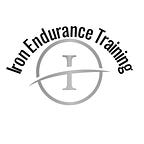How to adjust your squat if you’re feeling knee pain.
With the well deserved reputation as the king of exercises, some variation of the squat should be in all of our workout routines. It’s a movement that transfers over to real life, and recruits all of our large muscle groups of the lower body. Those muscle groups being;
Quads- Vastus Lateralis, Vastus Intermedius, Rectus Femoris, & Vastus Medialis
Glutes- Glute Max & Glute Minimus
Adductors- Gracilis, Pectineus, Magnus, Longus & Brevis
Hamstrings (to a lesser degree)- Bicep Femoris long/ short head, & the semimenbranous & semitendinisus
In addition to the lower leg muscles, the deep core muscles also do a ton of work to stabilize the spine. And depending on the squat variation, the upper body is also working. In photo shown above I’m doing a goblet squat. So with dumbbell in this position, just below my chin my biceps(arms), front deltoid(shoulder) are also under load. So there are a ton of benefits to squatting on a regular basis. Lets be clear about one thing before we continue, squatting is absolutely NOT bad for your knees. In fact the opposite is true.
But some people do report knee pain during the squat pattern . In fact I was one of them. A few years ago I got my personal trainer certification(that was the veeery beginning). Some of those certifications instruct us to squat with our feet shoulder width apart, facing directly forward at all times. Now this isn’t necessarily incorrect. It just doesn’t apply to everyone.
So to fix this knee pain lets have a look at the bones & joints involved in the squat pattern.
The squat pattern is considered to be a “knee dominant” movement , that engages both muscles at the knee and hip joint. The bone that connects to both joints is our femur/ thigh bone. It inserts into the pelvis at the acetabulum(hip), and connects with our knee with bones, patella(knee cap), and tibia(shin bone).
This important to understand, in particular, where are thigh bone inserts into our hip, because that insertion is where some people naturally have more room in that hip socket than others. In fact one side could have more room that the other for most of us.
Now let’s get back to the basic instructions of setting up the squat with our feet shoulder width apart and our toes facing forward. What happens when our coaches cue clients to set up like that?A lot of us run out of room in that hip socket early, because its not our natural foot position,therefore causing our thigh bone to be at a very unnatural relationship with its connecting knee joints below. And the result is obvious knee pain.
So what do we take away from this? There is no one way to cue up the squat pattern. It’s a movement that should be trained with a fundamental understanding of human anatomy. Play around with foot position, find what works for you. For me, based on my natural anatomy at the hip my right foot is slightly more externally rotated. So even when I have attempted to squat with my feet parallel, facing forward, at the top of my squat my feet are in it’s natural position.
Now I know some might be thinking, why would the trainer certification process instruct trainers incorrectly. Well I do know the answer to that question. I suppose that’s another story for another day. In the meantime, find what works for you, and get your squat on.
